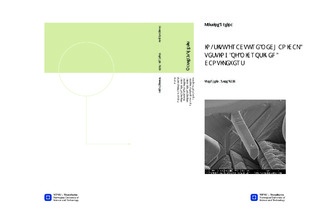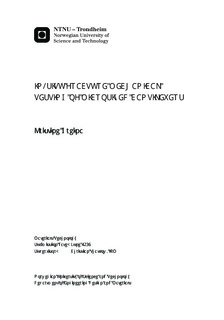| dc.description.abstract | The arctic is an appealing new ventures area for the oil and gas industry. However the climate is extremely demanding, and more technically challenging than any other environment. With design temperatures down to -60°C the ductile to brittle transition temperature (DBTT) is an important concern. The propagation of a brittle fracture in iron and steel requires much less energy than that associated with a ductile fracture. Once a material is cooled below the DBTT, it has a much greater tendency to shatter on impact instead of bending or deforming. The brittle-ductile behavior of BCC crystals has long been an area of intensive study, however the fundamental mechanisms that control the transition have not yet been explained. The rapid development within nanotechnology has made it possible to conduct small scale fracture experiments. The development of innovative nanomechanical testing techniques could lead to a better understanding of fracture properties at low temperatures, quantitative information on local stress requirements for crack propagation and subsequently explain the fundamental mechanisms that control the ductile to brittle transition. Advanced fracture experiments of pure iron at a micron scale have been completed. Electron Backscatter Diffraction analysis were conducted in order to determine the crystal orientation of the surface grains. Micro-cantilevers with dimensions of approximatly 2x2x10 μm were fabricated, in grains with preferred crystal orientation, by means of Focused Ion Beam (FIB) milling. The cantilevers were then loaded in a controlled manner to obtain load displacement data using a Picoinenter. The use of a picoindenter combine with a Scanning Electron Microscope (SEM) has shown to be a valuable tool since it allows events observed in the mechanical data to be correlated directly with the corresponding deformation mechanisms witnessed through the electron microscope. Extensive work has been put in to designing and constructing a cooling system, in order to conduct micro fracture experiments at low temperatures. The developed cooling system consists of a liquid nitrogen tank mounted on an SEM port, which is mechanically connected to the sample through a coldfinger. The thermal conductivity of the cooling system proved be sufficient; after approximately 1,5h a temperature of -90°C was reached, and loading of cantilevers at room temperature, -70°C and -90°C were successfully conducted. All cantilever were plastically deformed during loading, but no fracture occurred. Due to the absence of fracture the critical stress intensity factor, i.e. fracture toughness, could not be determined. However the preliminary stress intensity, (KQ) was calculated using five different methods. The results showed a drop in the preliminary stress intensity values between -70°C and -90°C. The KQ values may indicate the stress causing the first deviation from ideal elastic behavior by dislocation movement and plastic deformation. By this, the stress at which plastic deformation starts, decrease with decreasing temperature. It was not possible to measure the Crack Tip Opening Displacement (CTOD) directly during in-situ experiments, due to low image resolution. However, CTOD was calculated with two different methods: the hinge model and the double gauge model, both relying on the measurements of CMOD during loading. CTOD values for the two different methods were compared, however, they did not correlate. The double gauge model is probably the most accurate method since it is a direct approach and independent of the global behavior, whereas the hinge model relies on accurate values for the rotational center. | nb_NO |

